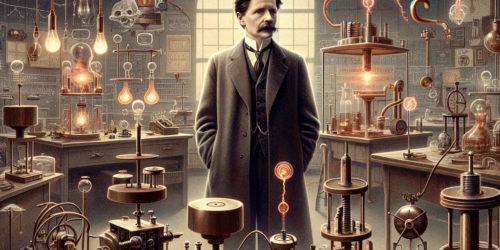Jack Parsons

Jack Parsons, an American rocket engineer and occultist, occupies a unique position in the annals of both science and the esoteric. In Los Angeles, a city already rich with the burgeoning aerospace industry and of spiritual movements, Parsons managed to blend his groundbreaking contributions to rocket science with his deep involvement in occult practices, most notably with the Ordo Templi Orientis (OTO), led by the infamous Aleister Crowley.
Parsons is best recognized for his pivotal role in founding the Jet Propulsion Laboratory (JPL), laying the groundwork for the later formation of NASA. His passion for rocketry was not just scientific; it was imbued with a mystical fervor, seeing in the conquest of space a means to transcend human limitations. This duality of Parsons’ life is emblematic of a period where the boundaries between science fiction and reality were increasingly blurred, with rocketry itself seen by many as a fanciful pursuit.
If you can believe it, there is a Jack Parsons Crater located on the far side of the Moon, which is the hemisphere that cannot be seen from Earth due to the Moon’s synchronous rotation. This area is often referred to as the “dark side” of the Moon (although it receives just as much sunlight as the near side). The crater is named in honor of Jack Parsons for his contributions to rocketry and space exploration.
Parsons’ foray into the occult, particularly his practice of what many would label “black magic,” was more than a mere eccentricity. He saw in these rituals a scientific method to explore and harness spiritual forces, aligning with Crowley’s belief in using the “method of science” for religious ends. Parsons’ rituals, often involving sex magic, were not just for personal enlightenment but were aimed at bringing about profound changes, both personally and on a broader cosmic scale. His attempt to invoke the deity Babylon, hoping to usher in a new era, exemplifies his grandiose vision of magic and science converging to propel humanity forward.
Jack Parsons was a key figure in the early development of rocket propulsion systems and co-founder of the Jet Propulsion Laboratory (JPL), which became a major part of NASA’s efforts in space exploration. During his pioneering work, Parsons collaborated with several notable individuals, including Frank Malina, a mathematician and mechanical engineer, and Edward Forman, who shared Parsons’ interests in rocketry. Together, they formed the GALCIT Rocket Research Group under the guidance of Theodore von Kármán, a professor of aeronautics at the California Institute of Technology (Caltech) and an influential figure in aerodynamics.
This group, often referred to as the “Suicide Squad” due to the dangerous nature of their experiments, conducted numerous tests and developed technologies that laid the groundwork for future space missions. Their collaborative efforts contributed significantly to the field of rocket engineering and the eventual establishment of JPL as a cornerstone of the U.S. space program.
Jack Parsons, met a tragic end on June 17, 1952, when an explosion occurred in his home laboratory in Pasadena, California. The explosion was so powerful that it caused significant damage to the lab and surrounding area, shaking a large section of the city. Despite the severe injuries Parsons sustained, including the loss of a limb and severe damage to his face, he was found alive but succumbed to his injuries shortly after being taken to the hospital.
Parsons legacy, underscores the indelible mark he left on the fields of rocketry and space exploration, a testament to a man who lived at the crossroads of science and the supernatural.



